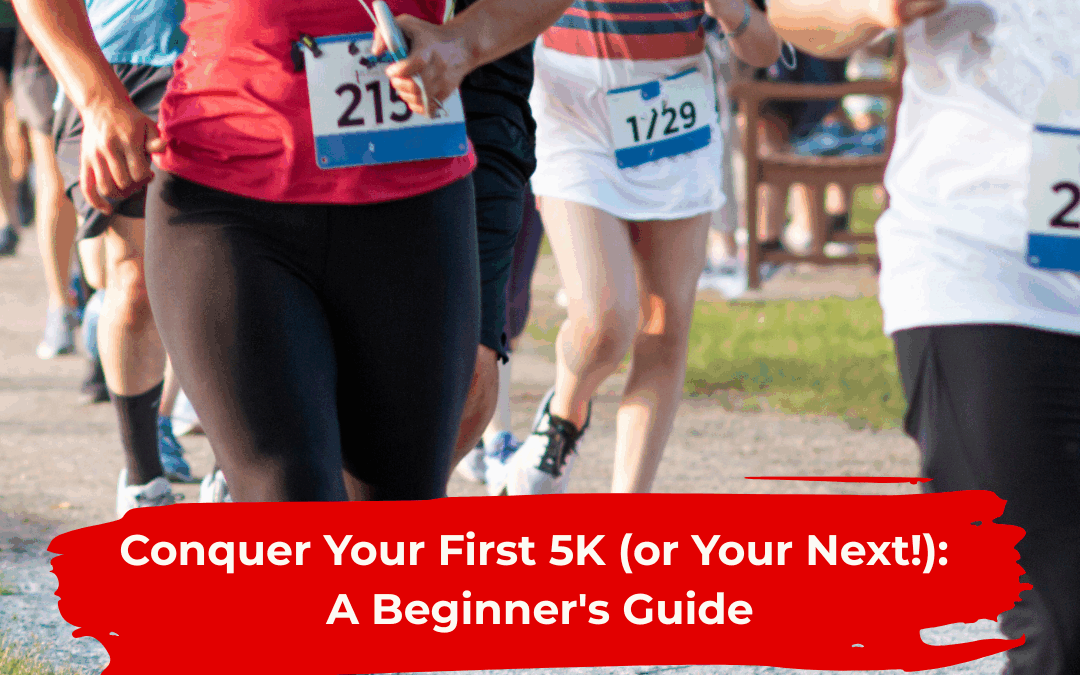
by Guest | May 28, 2025 | Being Well, Featured, Move Well, Uncategorized
Written by: Molly Carlson
So, you’ve signed up for a 5k—or you’re thinking about it—and now you’re wondering, “How do I train for this?” With the Tillamook YMCA Milk Run coming up at the end of the month (offering a 2-mile walk/run, 5k walk/run, or 10k run), it’s safe to say you’re not alone.
Maybe a friend talked you into it, your co-workers signed you up, or—like me—a family member asked you to do it with them. Whatever the case, it’s a good idea to start training now so you can feel confident and prepared on race day.
A 5k is a great distance for a first race. It’s long enough to feel like a meaningful challenge, but short enough that the risk of injury, overtraining, or not finishing is relatively low. Remember: it’s completely acceptable to walk part or even all of the race. Participating in and completing a 5k is a win in itself.
Whether your goal is simply to finish or to set a new personal best, following a training plan can help you get there.
As a personal trainer and outdoor enthusiast, I stay pretty active—but I don’t usually run as part of my regular training. When I sign up for a 5k, I give myself at least 6 weeks to prepare, gradually increasing my mileage to get race-ready. If you’re not currently active, you may want to extend your training time to 8–10 weeks (or more) so you can build up gradually and avoid injury.
Tips for Training for a 5k:
Start slowly:
It’s okay to walk or jog rather than run. Keep your runs shorter in the beginning and gradually work your way up. Doing too much, too fast can lead to burnout or injury. Most training runs should be done at a moderate pace—think: “conversational pace,” where you can speak in full sentences. If you’re breathless, slow down or walk.
Rest is important:
Your body needs time to recover as you increase your mileage. Incorporate rest days into your plan, and try cross-training activities like swimming, biking, or weightlifting to support your running. Taking at least one full day off from training each week is a smart move.
Listen to your body:
Staying hydrated, fueling with nutrient-rich foods, and paying attention to any aches or pains are all key to staying healthy and injury-free.
Warm-ups and cool-downs are non-negotiable:
Every session should start with a 5-minute warm-up and end with a 5-minute cool-down. A brisk walk and a few mobility drills are a great place to start and finish.
Try This: The Walk/Run Method
One tried-and-true method for 5k preparation is walk/run interval training—alternating between walking and running. Overtime, you’ll increase both your running intervals and overall distance. As the weeks progress, the running segments get longer, while the walking breaks get shorter.
Aim to run three times per week: two shorter runs and one longer run, staying within the range provided each week. Add two cross-training days (lifting, swimming or biking) and at least one full rest day. During your final training week, reduce your runs to 1–2 days to conserve energy for race day.
Sample 8-Week Training Plan:
Week 1: 1 min run / 1–2 min walk — 1 mile
Week 2: 2–3 min run / 2 min walk — 1.25–1.5 miles
Week 3: 3–5 min run / 2–4 min walk — 1.5–2 miles
Week 4: 3–8 min run / 1–4 min walk — 2 miles
Week 5: 5–10 min run / 1–5 min walk — 2–2.5 miles
Week 6: 7–10 min run / 1–4 min walk — 2.5–3 miles
Week 7: 9–14 min run / 1–2 min walk (or as needed) — 2.5–3 miles
Week 8: 10–15 min run / 1–2 min walk — 2–2.5 miles (taper before race day)
If you are already pretty active, you can probably jump in at week 3 of this program rather than starting from the beginning. Any plan should be adjusted to meet you where you are in your fitness journey. Your “run” intervals might be a brisk walk or a light jog—and that’s totally fine. The pace doesn’t matter.
What does matter is showing up, having fun, improving your health, and doing something that makes you feel alive. You’ve got this!
See you on the course!
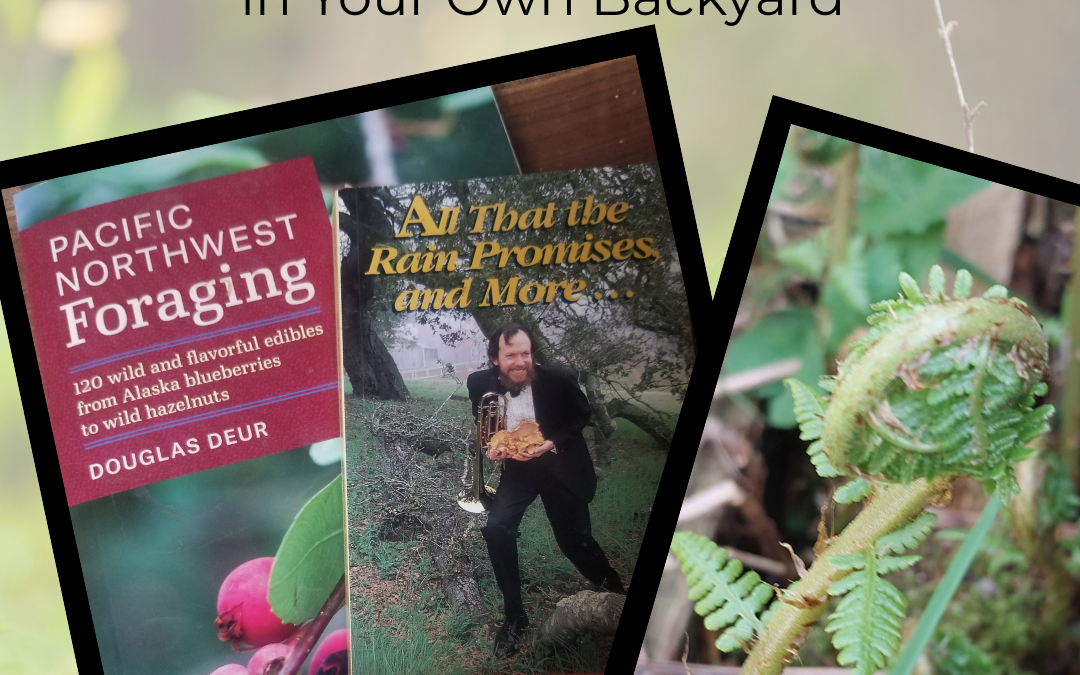
by Guest | Apr 16, 2025 | Being Well, Eat Well, Featured, Move Well, Uncategorized
By Laura Swanson
Spring-time and the wild harvests begin – friends and family are gathering nettles and fiddleheads, spring mushrooms and more.
Foraging is a great way to supplement your family’s food supply – and there are lots of yummy options, right in your backyard. Foraging is the practice of finding, identifying, and collecting edible plants, fungi, and other food resources in the wild. It’s a way to connect with nature and enjoy the bounty of the natural world.
Foraging for food instead of purchasing it at the grocery store can be a frugal and healthy way to feed your family. It can help you save money, get exercise and bond with your loved ones as you forage together.
Things you find in the forest or along our coastline can enhance usual grocery store purchases or you can go for a full wild harvest meal.
Beginner Foraging
If you are just starting to entertain the idea of foraging, it can be overwhelming and a little scary. You likely worry about picking the wrong kind of mushroom and getting sick. For beginners, there are ways to ease into foraging without needing to worry about poisoning yourself. There are workshops and classes available and several resources (see list below) that can help get you started.
One of the easiest foraging opportunities is dandelions. They are plentiful throughout the spring and summer and the leaves are delicious in salads.
Many people enjoy harvesting from the sea, along our beaches and bays there is an abundance of clams, mussels, seaweeds and more that are edible and available.
It requires knowledge of edible plants and how to identify them safely, as well as responsible harvesting practices.
Edible Wild Plants
Many plants, fruits, and nuts are edible in the wild, but it’s crucial to identify them correctly to avoid poisonous or harmful species.
Some common edible plants include:
-
- Wild Greens: Dandelions, Lamb’s Quarter, Nettles, Watercress
- Berries: Wild Berries (ensure they are ripe and from a safe area)
- Nuts: Acorns, Hazelnuts, Hickory Nuts
- Mushrooms: Puffballs, Chicken of the Woods, Maitake
- Roots: Wild Yams, Ramps
Important Note: Always be 100% certain of your identification before consuming any wild food.
Responsible Foraging Practices
- Know Your Area: Research the plants and ecosystems in the area you plan to forage, and be aware of any potential hazards.
- Respect the Land: Leave no trace, pack out all trash, and avoid disturbing the environment.
- Harvest Sustainably: Take only what you need and leave enough for the plants and wildlife to thrive.
- Be Aware of Contamination: Avoid foraging in areas that may be contaminated with pesticides, herbicides, or other pollutants.
- Check Local Regulations: Some areas may have restrictions on foraging, so check with local authorities before you go.
- Start Small: If you’re new to foraging, start with a few easily identifiable plants and gradually expand your knowledge.
- Consider the Season: Different plants are edible at different times of the year, so be aware of the seasonal availability of wild foods.
Here are some of the edible plants you’ll find during Spring: asparagus, cattail shoots, chickweed, dandelions, milkweed shoots, shaggy mane mushrooms, sheep sorrel, stinging nettles, wild violets, fiddleheads, salmonberries, morels, lambs quarters, and more. This is just a sample of the many edible plants available – spruce tips for tea, later in the season wild rose hips – every season brings more bounty.
Please forage responsibly – do not over harvest, be aware and respectful of public and private lands, always give thanks for the bounty and leave some plants to continue to provide for the wildlife and for next year’s harvest.
Resources: Pacific Northwest Foraging by Douglas Deur
Mushroom Guide – “All That the Rain Promises and More …” by David Arora
Pacific Harvest: A Northwest Coast Foraging Guide by Jennifer Hahn
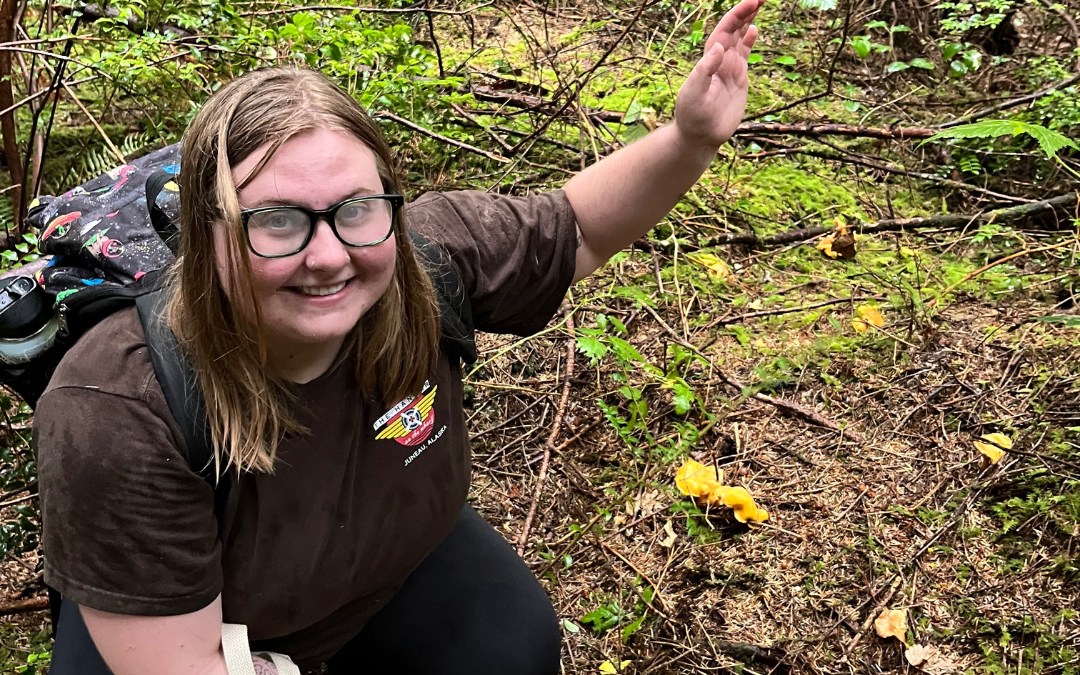
by Guest | Mar 3, 2025 | Being Well, Featured, Move Well
Progress over Perfection Update Written by Emery Edwards
Almost a year ago, I wrote and published an article about my journey of pursuing progress over perfection. I’m a year and a half into my journey, so I thought it’s time for an update.
Having a progress over perfection mindset has changed my life for the better. Before last year, I believed that if I couldn’t do something perfectly the first time, I couldn’t, or wouldn’t, do it at all. This was a toxic mindset and not only limited my journey towards physical health, but also my creativity. I wish that someone had been realistic with me about what this actually looks like. Even now, it’s hard not to compare when I see people accomplishing their weight loss, fitness, or other health goals, in shorter periods of time. However, if you’re interested in pursuing your goals with the progress over perfection mindset, it’s important to recognize that comparison is the thief of joy. Your body, your goals, what you enjoy, and your circumstances, will never be the same as someone else’s. And for me, I’m still changing my habits and learning what works for me. In the process, however, I’ve found so much more joy and happiness than I have ever known possible, but that isn’t reflected on the scale at the doctor’s office.
When I began this journey of progress over perfection, I felt so out of touch with my body and I was constantly inflamed, bloated, and in pain. I had lost a significant amount of muscle mass during a particularly bad bout of depression; and combined with the effects of staying indoors during COVID, I felt trapped inside myself. I couldn’t move the way I wanted; I didn’t feel the way I wanted and had no idea how to fix it. How can you change decades of poor eating habits, and a lifelong toxic relationship with food and exercise? Well, the answer for me was I had to start somewhere. Anywhere, really. And that’s the key with having a progress over perfection mindset- start anywhere and make small, incremental changes that you can sustain for the rest of your life. So, that’s what I did. I started by just trying to get more protein and fiber. Then I started walking along the bay. I discovered I enjoyed doing it, so I started walking more often. There were days when I wanted to go on a walk and yet I felt stagnant and trapped. I found on those days, saying ‘if I get out there and don’t want to anymore, I’ll go home’ helped, because I have never regretted going for a walk. Not even the time I got stuck in a sudden hailstorm.
Perfection is the enemy of good. The enemy of feeling good. If I kept quitting after not reaching my unrealistic goals the first time, I wouldn’t be where I am today – a happier, healthier version of myself than I ever thought possible. I make delicious and nutritious meals, I forage, I take walks, I don’t get winded on the stairs, I dance for hours with my friends, hike for miles… the list goes on. It’s a far cry from when I started – unable to walk a half mile without fatigue. For me, taking a step to tap into what I enjoyed doing as a kid, like bike riding or gardening, helped me be more successful. Even collecting things can be physical activity! I spend hours walking miles along the beach looking for agates or in the forest foraging for mushrooms. Try different things and see what works for you and stick with it, not because you must, but because you want to. Getting physical activity in doesn’t have to mean spending hours in the gym unless you want it to. In my experience, walking and spending time in nature has become a favorite pastime. I do it for fun now and it’s helped me regain my creative spark. I have built muscle, I have regained my confidence, I sleep better, I create more often, I have the energy to show up for my community, and the scale still hasn’t changed. It’s changing your habits slowly and consistently that will get you to where you want to be. Not shame, blame, or perfectionism. Instead, it takes time, love, and care.
Someone once told me that every meal is a chance to learn more about yourself. Every meal, whether you’re following your goals or eating a mound of french fries for dinner, has something you can learn from it. Paying attention to the feeling you get when you eat different things is important. Do you eat that mound of fries and then feel exhausted after? Do you have energy after eating that chicken caesar? No amount of research will tell you the perfect plan for you and your lifestyle, but it can provide you with guidelines and ideas. Eating more protein and fiber, building muscle, being active, limiting your sugar intake… are all important features of a healthy lifestyle. But this world is full of challenges when it comes to eating healthfully, exercising, and maintaining the habits that help you feel your best. Advertising, social pressures, holidays, and a host of other circumstances put those of us who struggle to self-regulate our eating habits and physical activity in daily battles. Sometimes, especially during the holidays, it can feel like an all-out war. A physician can tell you to follow a certain diet, follow the weekly guidelines for physical activity, avoid certain foods, etc. Work with your healthcare provider to find a plan that works for your physical and dietary needs—getting a dietician was so helpful for me!
At the end of the day, it’s always easier said than done, but this is where progress over perfection comes in. Rome wasn’t built in a day, and your ideal habits and lifestyle won’t be, either. It takes hard work, determination to feel better, and the willingness to try and fail over and over. It takes trial and error to figure out what works for you, and that’s what the perfection mindset robs you of. So, this year, instead of trying to adhere to strict, unrealistic, New Years Resolutions, I have a new challenge for you. Try, fail, and try again. I think you’ll find some things that are worth sticking to for the long term. Who knows, you might enjoy it!
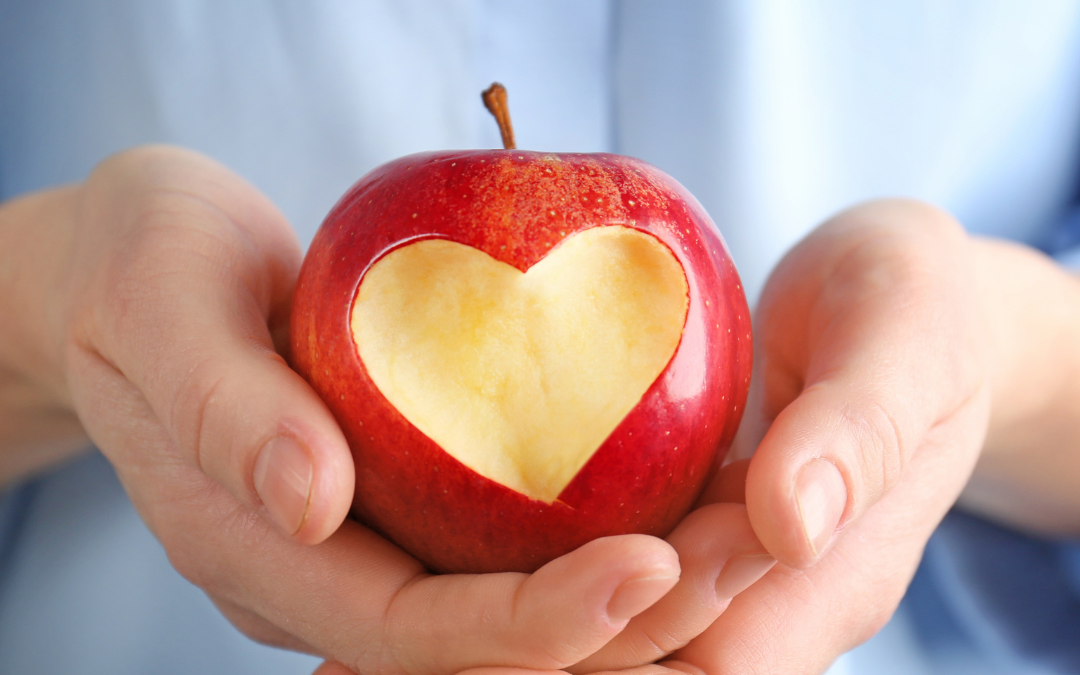
by Guest | Feb 19, 2025 | Eat Well, Featured, Move Well, Recipes, Uncategorized
Written by Eva Foley, Oregon Dairy Council Intern
Did you know that your heart is the most important muscle for your overall health and well-being? This special organ delivers oxygen to your entire body and deserves the best treatment from you, its owner, to keep it working for a long, healthy life. Giving your heart some tender loving care starts with something you do every day: eat! This means that with each meal and snack, you can strengthen your health by making heart-smart decisions about the foods you eat. February is National Heart Health Month, so let’s dive into some savvy food choices that will make your heart happy!
- Fruits and vegetables: Plan to eat 2-3 servings of each fruit and vegetables per day. A good way to think about it is adding one fruit and one vegetable to each meal or snack. Picking fruits and vegetables that are in season usually means better flavor and texture and paying less at the store. Frozen or canned fruits (without added sugar or heavy syrup) and vegetables (without added salt or sauces) are just as nutritious as the fresh kind and will last longer.
- Dairy: Studies have shown that 2 servings per day of fat-free or low-fat dairy have a protective effect on the heart. Dairy is also an affordable addition to most diets and can be included in many recipes, both sweet and savory.
Lactose intolerant? Check this out: https:/www.niddk.nih.gov/health-information/digestive-diseases/lactose-intolerance/eating-diet-nutrition
- Fiber: The goal for fiber in a heart-healthy diet is 25-30 grams per day from foods. Both soluble (think oats and beans) and insoluble (think whole grains, fruits, and vegetables) are important to include. Increase fiber intake slowly over time to allow your body to adjust to the right amounts.
- Healthy fats: Including the right kinds of fats in your diet helps you feel satisfied after a meal and nourishes a healthy heart. Foods like avocados, nuts, and seeds supply healthy unsaturated fats, while limiting saturated fats (such as butter, coconut, and palm oils) is just as important.
- Lean proteins: The right kind of protein supports heart health by building stronger muscles and helping to control hunger between meals. Boneless, skinless chicken breasts, fish and seafood, and tofu are all great options. Remember, many dairy foods, vegetables, legumes, and nuts contain protein, too!
- Limit salt and added sugar: Limit sodium intake to 2300 milligrams or less per day and aim for no more than 25 grams of added sugar per day for women (36 grams per day for men). You can find how much sodium and added sugar a packaged food has per serving on the nutrition label. It’s important to remember that the sugars to limit are those that are added to a food (such as table sugar or high fructose corn syrup); sugars that are naturally part of fruits and dairy products should not be counted towards daily added sugar intake.
Helpful links:
Serving sizes/portions: https://www.myplate.gov/
Are you ready to get started with a heart healthy recipe? This comforting breakfast for all ages supplies fruit, dairy, and both soluble and insoluble fiber for a healthy start to your day. It’s easy to make ahead of time and portion out for a quick, on-the-go breakfast treat. Top with a serving of plain Greek-style yogurt to boost your dairy and protein intake.
Apple Spice Baked Oatmeal
Prep time: 10 minutes; makes 9 servings
Ingredients:
- 1 egg, beaten
- ½ cup applesauce
- 1 ½ cups nonfat or 1% milk
- 1 teaspoon vanilla
- 2 Tablespoons vegetable oil
- 1 apple, cored and chopped (about 1 ½ cups)
- 2 cups old fashioned rolled oats
- 1 teaspoon baking powder
- ¼ teaspoon salt
- 1 teaspoon cinnamon
- Topping:
- 2 Tablespoons packed brown sugar
- 2 Tablespoons chopped nuts (optional)
Directions:
- Wash hands with soap and water.
- Rinse or scrub fresh fruits under running water before preparing.
- Preheat oven to 375 degrees F. Lightly oil an 8×8-inch baking dish.
- Combine the egg, applesauce, milk, vanilla and oil in a bowl. Mix in the apple.
- In a separate bowl, mix the rolled oats, baking powder, salt and cinnamon. Add to the liquid ingredients and mix well.
- Pour mixture into baking dish and bake for 25 minutes.
- Remove from oven and sprinkle with brown sugar and (optional) nuts.
- Return to oven and broil for 3 to 4 minutes until top is browned and the sugar bubbles.
- Serve warm. Refrigerate leftovers within 2 hours.
Notes:
- Substitute other fruit for the apple. Try bananas, pears, blueberries or a mixture.
- Serve warm topped with vanilla yogurt.
Photo & Recipe Source: https://foodhero.org/recipes/apple-spice-baked-oatmeal
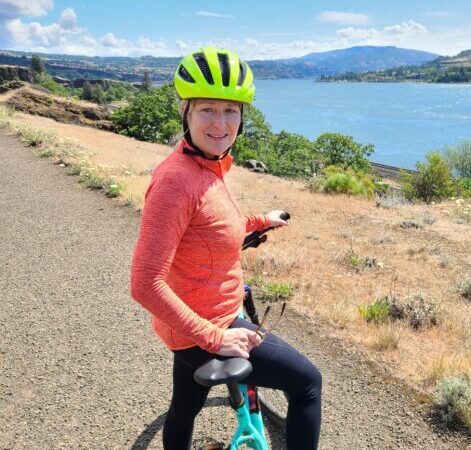
by Michelle | Nov 1, 2024 | Being Well, Featured, Move Well, Why I'm In
Why I’m “in” with Wellness
Michelle Jenck, Well-Being Director, Adventist Health Tillamook and Tillamook County Wellness Coordinator
Wishing for Wellness
I was recently asked how I came to be involved in wellness work. I’d like to say I was a lifelong fitness enthusiast but that isn’t true. As a child, I wanted to be physically fit and athletic but, alas, it was not in the cards for me. Severe asthma left me breathing into a brown paper bag on the sidelines and a debilitating eye condition called amblyopia, (my left eye is nearly blind), meant that, with no depth perception, I was to forever be, the “last one picked for the team.”
During middle school, I was too young to work, old enough to be home by myself but idle enough to have begun getting in trouble (serious, trouble). My saving grace was wandering into a YMCA to kill time after school. I started going to the weight room and pushing weights around. I had no idea what I was doing but kind people showed me what to do and what muscles I was working. It felt so good to feel a sense of control moving my body. I could push heavy things on purpose and muscles would form in places that were once squishy bits. It was like magic.
The best part was how weight training made me feel emotionally. I felt happier and gained a sense of control (something I have learned we need for good mental health, called a “locus of control.”) My self-esteem improved. I could set goals for myself and work to reach them, building successes I never believed possible for myself. I pursued weight training all through high school and was one of a few girls that joined the school’s newly formed competitive power lifting team.
My senior year in high school, I decided maybe I could push my body in other ways and began my first attempts at running. Initially, I “ran” 1-2 blocks and then sat on a curb breathing into a paper bag until my asthma attack subsided enough to slowly walk home. Tenacious and undaunted, I kept after my goal, gradually working my way up to running 2-3 miles at a time, and ultimately up to 6 miles over as many years. Running, even at a slow pace, helped me burn off stress and was a convenient way to get in a quick bout of exercise when I didn’t have time to hit the gym.
Working in Wellness
Through high school, college and into my young adult life, exercise was a staple. I tell people it should be like brushing your teeth; something you do every day without even thinking about it, because it is so ingrained in your routine.
As a stay-at-home mom, I was taking classes at the Tillamook YMCA, grateful to spend time among adults. One day, I made the fateful decision to ask Jeannie Christensen if there was ever going to be a step aerobics class offered at the Y. Like so many things in a small town, the answer was, “why don’t you start one?” Thus began a nearly 30-year career of teaching many different exercise disciplines.
I loved (and still love) teaching fitness classes. It is a way to give back, helping others experience their best life. Over all these years I have seen fitness change people from the inside out. That “locus of control,” it turns out, is an important component of life success and resilience. When we become aware of and gain control over moving our bodies, using our minds, it is very empowering.
The A-Ha Moment
By this time, our oldest son had been diagnosed with autism and our lives were changing dramatically. As we worked with our son to help him develop the ability to regulate his emotions and manage the sensory stimuli causing so much turmoil in his mind and body, I discovered magic could be found in movement. The most effective exercises involved movements that strengthened the parts of his brain involved in balance, spatial awareness and motor planning. How interesting, I thought. The same could be said for teaching a step class.
Teaching adults how to move, while helping our son re-wire his brain with movement, turned out to generate an “a-ha” moment of monumental proportions. As I began to understand how the brain is formed and how it changes with regular physical activity, I began to consider the larger implications of what I was learning. What could this mean for other children? For anyone who wanted to be more physically coordinated, better regulated, smarter and more successful?
Armed with this discovery, I decided to go back to school to pursue a Master of Education in Health & Kinesiology. Graduating in 2012, I used my degree to expand exercise programming at the YMCA, adding Tai Chi: Moving for Better Balance, which over 300 older adults took in 2014. The following year, I was tapped to help lead a community effort to focus on reducing chronic disease in Tillamook County, which led to the formation of Tillamook County Wellness.
My Hopes for Wellness
I am very grateful for my experiences and the opportunity to influence health at both the individual and population level. As I enter my ninth year as coordinator for Tillamook County Wellness, I am looking ahead; or better yet, I am looking further “upstream.” So much of what contributes to wellness can be found between our ears. The mind. The brain. The connection between the brain and the body. This is where wellness starts. And it starts early in life – in the womb, in fact. Nearly 90% of a child’s brain is developed by the age of three and much of that development depends on movement.
My hopes for wellness are that we will begin to prioritize proper movement, nutrition and secure relationships during this critical window of childhood development. Do I have ideas for this? You bet I do and I can’t wait to keep working on wellness!
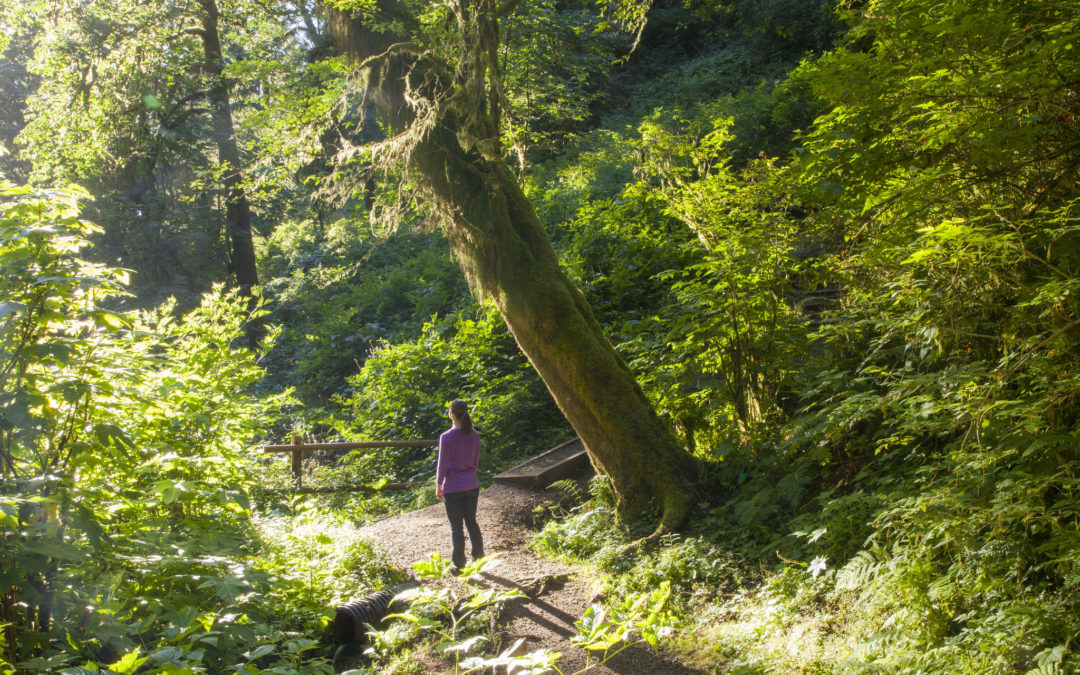
by Guest | Aug 19, 2024 | Featured, Move Well
Tillamook County is a wonderland of beautiful trails within an easy drive, giving everyone the chance to breathe the fresh air, walk off stress, and experience something new right here in our own backyard.
Worried that you won’t know how to hike the right way? In the hiking community there is a saying; Hike Your Own Hike. It means that there are a million ways to hike and the only “right way” is the right way for you. Power walkers and the “sloth team,” over-packers and minimalists, booted stompers and sneaker-wearing wanderers, all are welcome. Take your time, find the method that works for you, and do what makes you happy.
Here are a few guidelines that will help make your first hike a great experience.
The Ten Essentials
The Ten Essentials are the 10 things you should bring with you on every hike. Yes, every hike, even when it’s only half a mile. All of this should fit in a small backpack and don’t be afraid to dig out that old school bag.
- Good Shoes: Happy feet make for happy hikers. Pick shoes that fit well, have good treads for traction in mud, and will protect your feet from rocks, roots, and everything else. Worn in jogging shoes are usually a good choice for beginners. Wear wool or synthetic socks rather than cotton to prevent blisters.
- Map and GPS: You probably rely on your phone for directions, but it won’t necessarily work in the woods. Download a map to use offline, print out a hard copy map, and maybe even break out that old compass just in case.
- Water: There’s nothing like a cool gulp of water on a hot day. Bring a 16oz bottle of water for every person for every hour of hiking. Fill up a reusable bottle (usually 32oz) to save space and money. Bring extra water if it’s hot, the trail is steep, or if you’re bringing your thirsty dog.
- Food: Hikers need snacks! Your body will want more energy during your hike and kids especially need snacks. Choose something healthy like fruit, vegetables, whole grain crackers, nuts, and trail mix. High-protein energy bars can be a good choice.
- Rain Gear and Extra Layers: This is the Pacific Northwest, after all. Rain, fog, cold winds, and cool nights are normal. By layering a t-shirt under a sweatshirt you can take off a layer if you get overheated and then put it back on if it cools down. A rain jacket can also be a wind break and bringing a sweatshirt and a warm hat can help you be ready for whatever our wild weather can throw at us.
- Safety Items: Bring a light, a fire-starting kit, and a whistle. You can buy little “emergency prep” kits in most gas stations. These are just-in-case items, but you’ll be glad to have them if you need them. Kids should each have a whistle and know to blow 3 short blasts if they need to “find Mom and Dad.”
- First Aid Kit: Blisters, scrapes, or twisted ankles, a good First Aid Kit can take care of the problem. These kits are available in pharmacies in several sizes. Open up the kit and make sure you know what’s inside and how to use it to help. Think about if your family has any specific needs and add things if necessary.
- Knife or Multi-Tool: A simple pocketknife is a good thing to have and a multi-tool can be useful in many situations. From opening a snack packet to emergency fire starting, you’ll be glad you have it when you need it.
- Sun Protection: The sun is a welcome visitor to the Oregon coast, but we all know how harsh it can be. A hat, sunglasses, and sunscreen will help you enjoy the sun, rather than getting burned.
- Shelter: Many First Aid Kits will have a space blanket; light, inexpensive, and a great option for an emergency.
If your bag is packed with the Ten Essentials, then consider yourself ready for an easy trial run. Choose a well-known trail that’s close to town, short, and easy for your first hike. Let someone know where you’re going and when you’ll be back. Test yourself by pretending to be in the wilderness and imagine how you would deal with rain, getting lost, or a minor injury. Finally, make sure to have fun! It’s more important to enjoy yourself than it is to finish the trail, follow a specific plan, or reach your destination. Hike Your Own Hike, and you may find yourself planning your next trail as soon as you get home.
AUTHOR: Samantha Goodwin, NW Youth Corps, GIS Intern, US Forest Service






